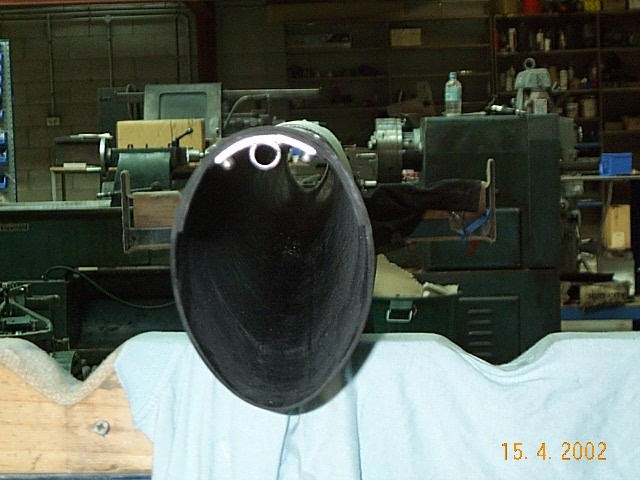How To Fit Out Your Boom
Before starting this process, check to ensure that you have all relevant tube and sleeving. Review your boom layout and spend some time preparing.
Some tubes have a specific orientation. If elliptical or foil boom, put the fattest side to the top. If a round boom, it may have stiffening bands to be orientated top and bottom. So make sure you understand where these are to be located before commencing with gluing and fit out. Remember, measure twice and cut once.
- If there are specific reinforcing or stiffening patches for your boom these will be identified. Always mark up where your fittings are going to be placed before you cut to length to ensure all fittings will fall within the designated areas.
- Off cut lengths can be cut in half longitudinally and used as reinforcements for the ends of the boom, or localised high point loads, i.e. vang fittings, etc. These sleeves may need to be sanded. It is a good idea to wet sand with a bucket of water or wear a dust mast if dry sanding.
- Prepare all surfaces to be glued by sanding, then cleaning with Acetone/Solvent.
- For gluing fittings and sleeves, mix up Epoxy with some Microfibre glue-powder until a thick paste is formed. Consistent enough so it will not drip off a paddle pop stick.
- Coat the sleeve with the mix and push it into location with pressure, slide back and forth to remove air bubbles. Reinforcing sleeves should be glued to assist with spreading the load.
- All fittings should be glued/riveted or glued/tapped/machine screws. This removes slop from the system. It is best to have a washer or reinforcing sleeves should be glued to assist with spreading the load.
- All fittings should be glued/riveted or glued/tapped/machine screws. This removes slop from the system. It is best to have a washer or reinforcing sleeve behind the fittings to spread the load as well as to stop the rivets splitting the tube.
- GOOSENECK & OUTHAUL - Larger boom sections may have reinforcing built into the laminate at the gooseneck or outhaul end, if so, it will be marked. FOr smaller boats, use boom off cuts to reinforce fittings such as gooseneck and outhaul fittings. Double thickness spread the load as seen below.


- VANG - Larger boom sections may have reinforcing built into the laminate at the vang point, if so, it will be marked. For larger booms, specially fabricated vang fittings can be made to spread the load as seen below.
- For smaller boats, use webbing straps for vang and mainsheet pulleys. These should have fasteners applied on the top surface of the tube as seen below. Webbing straps spread the load.

Large Boom Section with vang attachment

Main sheet bridles/straps

Small boat vang attachment bridles/straps

Small boat vang attachment bridles/straps
- Do not use rope bridles, these point load the tube. Avoid all point loads, including boom impact against side stays.
- Do not use self tapping screws. Use machine screws and tap the hole. This must have double thickness to do this effectively.
- Avoid putting holes in the underside of the boom as this is the tension surface.
We publish this information in good faith and to assist our customers to get the best performance out of their equipment, we do not take responsibility for customer assembly.
